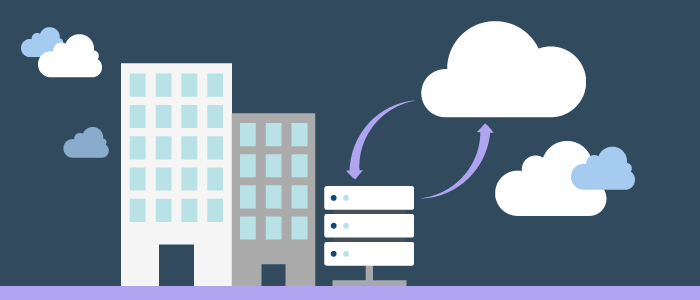Region
India
Disasters are unpredictable. It can be cyber-attacks, equipment failures, natural disasters, simple power outages, human errors, security vulnerabilities or anything that can cause risks to operations. Disaster recovery is an integral part of every business’s IT strategy and is becoming common nowadays because of the increase in the number of threats and mishaps. Thus, all businesses are always prepared with disaster recovery to ensure uninterrupted business and seamless customer experience.
Is yours?
If you are looking for a DR and stuck on which option to choose, you might want to tag along with me. This post is going to throw some light on why cloud DR is better than all the other options.
First, let’s look at how disaster recovery used to be done i.e., in on-premise disaster recovery.
Traditional disaster recovery entails facilities and real estate to house the infrastructure which stores the duplicate of the data. This setup enables resuming of business quickly in the event of a disaster by switching to the backup.
Traditional DR needs the following to be provided-
- Management and security personnel for the facilities
- Servers with the capacity to store all data and scale accordingly when needed
- Support staff for maintaining the infrastructure
- Internet connectivity with enough bandwidth to power your applications
- Network infrastructures such as firewalls, routers, switches, and load balancers
This will definitely cost a fortune. Moreover, it will be of use only if any calamities occur. So why invest so much money on something that might not be used at all?
Now, let’s discuss why everyone is including cloud into their disaster recovery plan and why you should do the same :
- Many options on where to back up your data
Let’s pretend that your company headquarters is in Japan. You have successfully built a data center and are now looking for a suitable place to back up your data on the cloud. You have many options to consider and you conveniently choose another city in the same country as your customers are nearby.
Later, unfortunately, during a natural calamity, both your data center and backup are destroyed. It is impossible not to wonder what the purpose of having a backup was.
If you used another cloud DR, you could easily backup in their center somewhere far away from your primary data center to make sure that your backup is secure. You can also backup in different locations simultaneously to be on the safer side.
This is one of the benefits offered by the cloud. You will have many options to house your backup and this will increase the chances of your business functioning without any problems owing to high resiliency.
- Easily implemented with high reliability
Let us continue with the same example. Your company headquarters is in Japan and due to a natural calamity, your data center there has gone down. As you are using cloud DR, all you have to do is deploy a cloud storage solution or tier your backup with a longer-term data storage solution. This is very different from how DR is done in traditional on-premise setups where you will have to transport and restore the backup with tapes.
Thus, when using the cloud DR, you can access all of your data through the internet more quickly and easily.
- Data is secure
There are rumors going around about cloud being insecure and prone to compromise privacy. However, it has been proven fake over time. Besides that, as a guideline, cloud needs to meet many compliance and regulations. You will certainly get a defined SLA and best guidance to setup your disaster recovery site.
- Saves money
Setting up another server, routers, switches, etc., for on-premise data storage and functioning is a costly affair. Unlike traditional DR, you have to pay only when used in cloud DR and it would amount to a fraction of what you will spend to build and maintain duplicate data centers.
With cloud, you only have to pay for what you use and it is cost-effective when compared to on-premise DR.
- Scalability
Another advantage of cloud DR is that you can easily accommodate your data as your business grows without any issues. This is really different from the traditional scenario where you cannot scale according to demand and have to buy another server for your needs.
- Shorter recovery time
A lot of IT professionals have reported facing more outages causing downtime and negatively impacting businesses. According to Statista, 24% of the firms around the world lose around $400,000 for every hour of downtime. A study conducted by Databarracks in 2017 has reported that out of 400 IT decision makers, 46% experienced more than four hours of IT-related downtime over 12 months. It sums up to a huge amount.
Cloud DR has shorter RTO when compared to on-premise DR. With cloud DR, you can typically start working again quickly, usually by 15 minutes or so, depending on the speed of the internet. This is way better than on-premise DR which takes hours.
Conclusion
All businesses are vulnerable to IT disasters. The number of competition in all the fields are increasing and during a crucial point like this, it is unacceptable to lose clients because of something that is preventable. Get an IT Disaster recovery plan as soon as possible and secure your business.
Redington Cloud Solutions can be your trusted partner in your disaster recovery roadmap. We ensure shorter RTO and no break in business continuity. With our multi-cloud managed service and skilled as well as experienced team, we together can build, manage and monitor your IT infrastructure impeccably.





